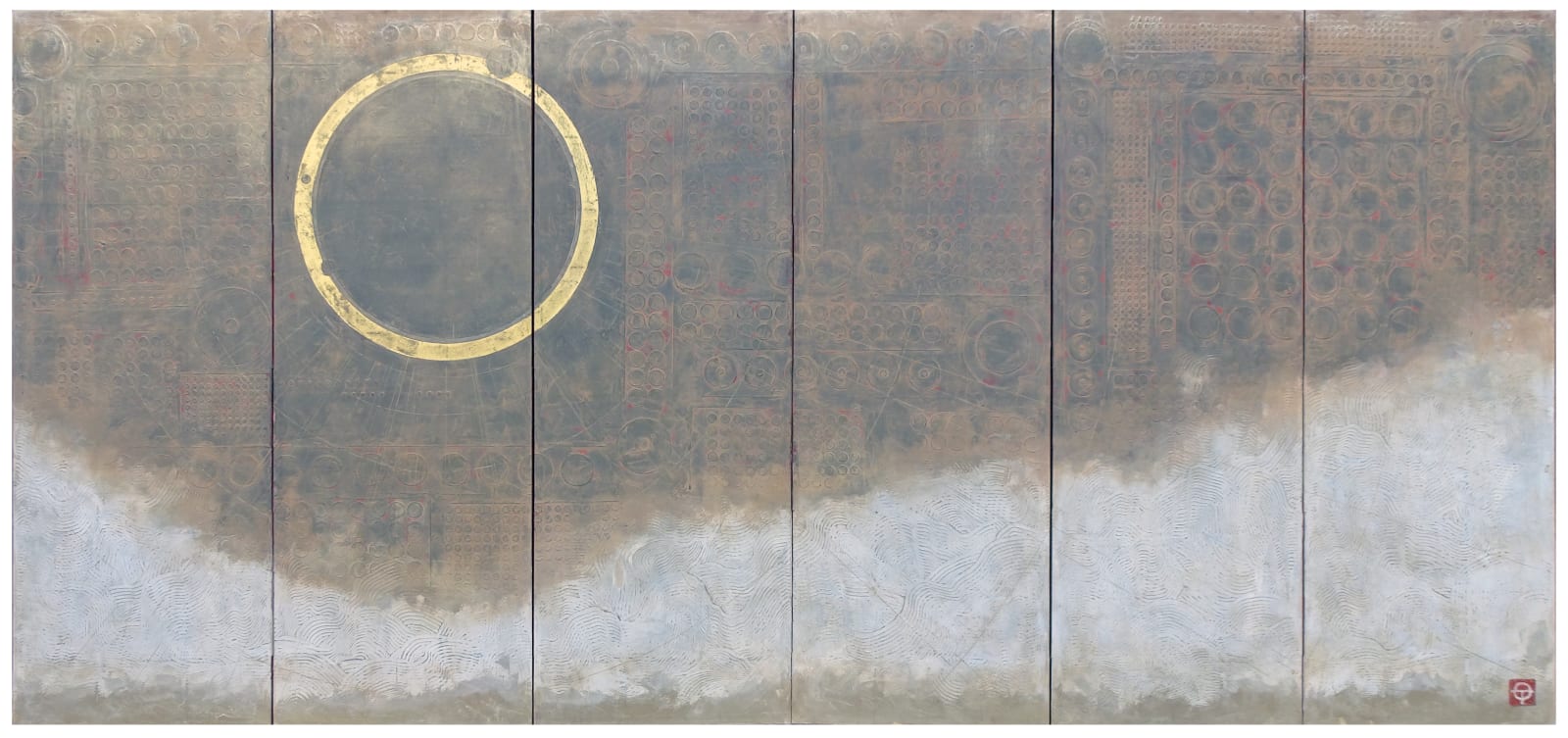Ken Matsubara Japanese, b. 1948
"Yo" Yang - 暘 (Six-panel Byōbu Screen), 1996
Painting
H59 7/8 x W129 1/8 in
H152 x W328 cm
H152 x W328 cm
A24002
Matsubara depicts light emanating from the sun’s golden halo, illuminating all within reach. Matsubara’s inspiration is the life of the great Buddhist monk Kūkai (774–835), who retreated to observe cycles of day and night from the vantage of an oceanside cave in pursuit of spiritual awakening. Kūkai frequently invoked the deity of the planet Venus, constantly reciting the Akasagarbha sutra of Kokūzō. Though initially commissioned for for Jingoji, the Shingon temple in Kyoto where Kukai resided after returning from China, the project was disrupted by the death of the temple’s head monk, though Matsubara would not be dissuaded.
